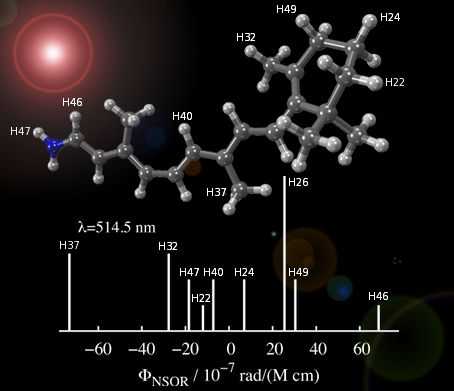


Nuclear magneto-optic spectroscopy (NMOS) is a group of new methods for optical detection of nuclear magnetization. In standard NMR spectroscopy the signal is registered as a voltage induced by the precessing nuclear magnetization. In contrast, the principle of NMOS is measuring how a light beam passing through the sample is affected by these small local magnetic fields produced by the nuclei. NMOS is a whole group of methods, encompassing several optical effects, such as circular birefringence, circular dichorism or linear birefringence.

Since the light disturbance of the electron cloud of the molecules leads to emergence of new physical obervables, NMOS provides signal of different origin than NMR and there is a potential wealth of new information that can be obtained by these techniques. For this reason, the theoretical calculations of various NMOS parameters are very valuable asset to uncover the secrets of the still not very well-understood NMOS spectra.
In our group we are studying NMOS both from theoretical as well as experimental point of view. We apply computational methods to reveal the meaning of the NMOS spectra and how to extract new information about molecular properties from them. We also develop the instrumentation for the observation of new NMOS effects.